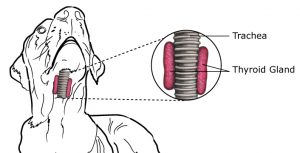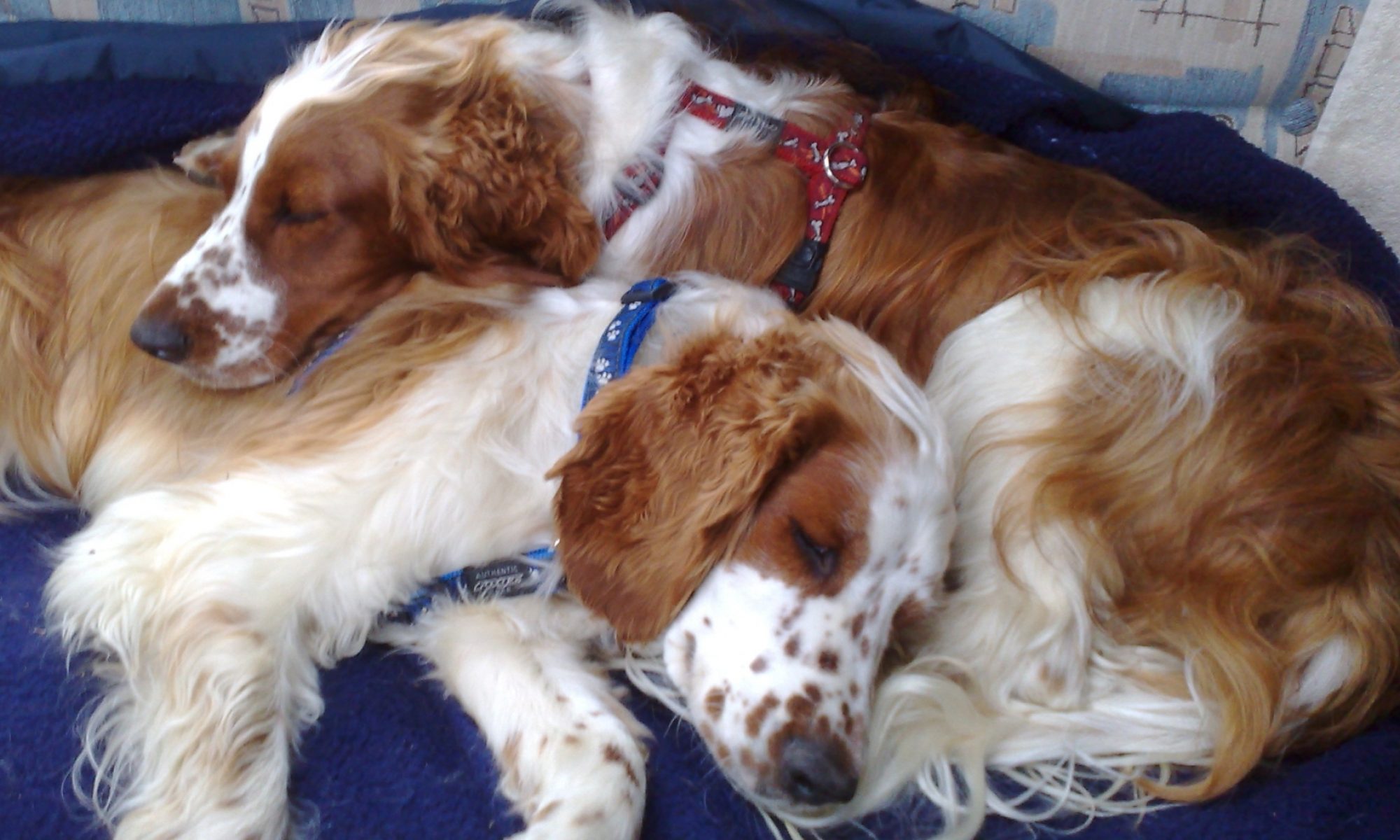Hypothyroidism

Hypothyroidism relates to a thyroid disorder where not enough thyroid hormone is produced. The thyroid hormone, thyroxine, regulates metabolism.
The thyroid gland is a butterfly-shaped gland situated either side of the larynx in the throat area, adjacent to the surface of the trachea. It is regulated by the pituitary gland that is located at the base of the brain. The pituitary gland reacts to the level of thyroid hormone in the blood, producing more or less TSH (thyroid stimulating hormone) depending on the thyroid level measured – if there is not enough thyroid then more TSH is produced.
Hypothyroidism can occur for a number of reasons, but the most common is where the dog’s own immune system kills cells in the thyroid gland. Other causes are cancer in the thyroid tissue, the presence of other diseases or the use of certain medications. It is also thought that neck injuries can cause problems with the thyroid, including where dogs pull excessively on a collar, as this exerts pressure exactly where the thyroid gland resides.
Hypothyroidism can go unnoticed for years before it is diagnosed due to symptoms not showing until around 70% of the thyroid gland has been damaged.
Often the first signs of hypothyroidism are behaviour changes – aggression, extreme shyness or seizure-like activity. Weight gain can also be an early symptom. As the condition progresses (around 70% of thyroid gland damage) obesity, hair loss (particularly on the trunk, on the back of the hind legs and the tail) and skin problems (flaky but not itchy or red, with possible black patches of skin) can occur, together with the coat becoming dull and thin. This can then be followed by muscle loss, sluggishness, slow heart rate, toenail & ear infections and intolerance to cold.
There is not a specific symptom that is diagnostic for hypothyroidism – the above symptoms are suggestive of it but can also be caused by other problems. Hypothyroidism is diagnosed by performing blood tests to measure the TSH level in the bloodstream (high), the baseline T4 (low) and free T4 by equilibrium (low).
NB other conditions can cause a lowering of T4, so this is not conclusive on its own.
Most dogs will respond readily to treatment in the form of a synthetic thyroid medication. This needs to be taken twice a day as the half-life is 12-16 hours, and not at the same time as calcium (e.g. bones on a raw diet) as calcium stops the body from absorbing T4. Once on medication, the dog will most probably be on it for life, but the majority of symptoms do then resolve. Regular blood tests will be required to monitor the level of thyroxine, and dosage will need to be adjusted accordingly.
Iodine in kelp/seaweed can help to boost thyroid function, and MCTs (Medium-chain triglycerides) in coconut oil can also help to balance the thyroid. However, once the thyroid gland has been damaged these food items will not help to repair it and medication will be required.
Historically, hypothyroidism was most frequently found in dogs 4-10 years old, and in the mid to large breeds, although it is now becoming more common in younger and smaller dogs. Breeds disposed to hypothyroidism are Golden Retriever, Doberman Pinscher, Irish Setter, Miniature Schnauzer, Daschund, Cocker Spaniel, Airedale Terrier, Boxer and Old English Sheepdogs.
Hypothyroidism is not predisposed to either sex, it is equally common in males and females, but spayed females and castrated males seem to be more at risk than intact dogs.
